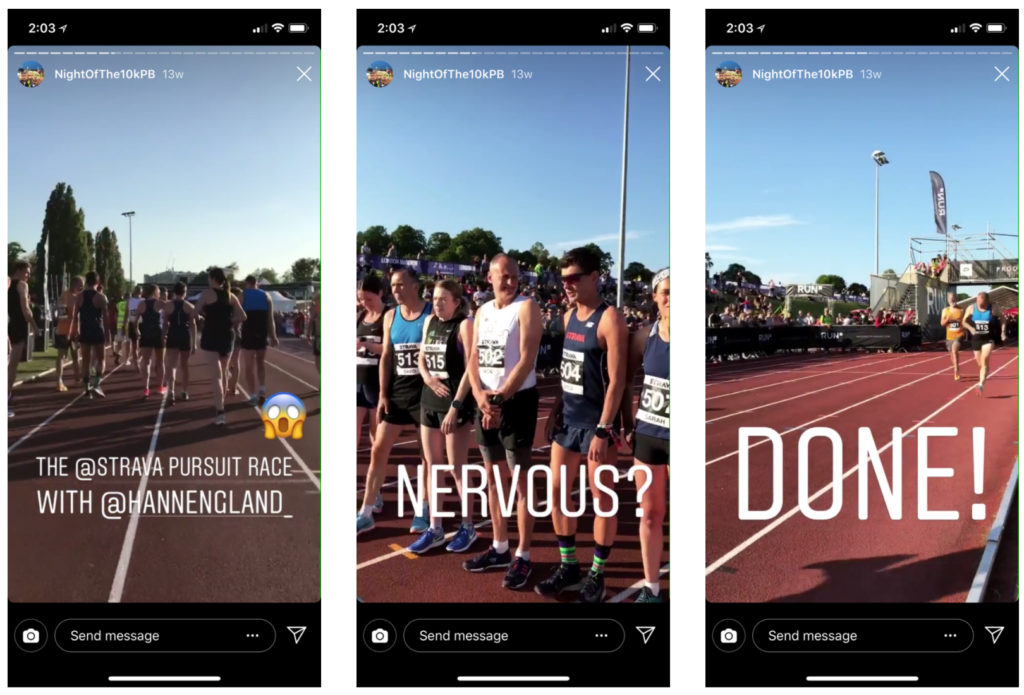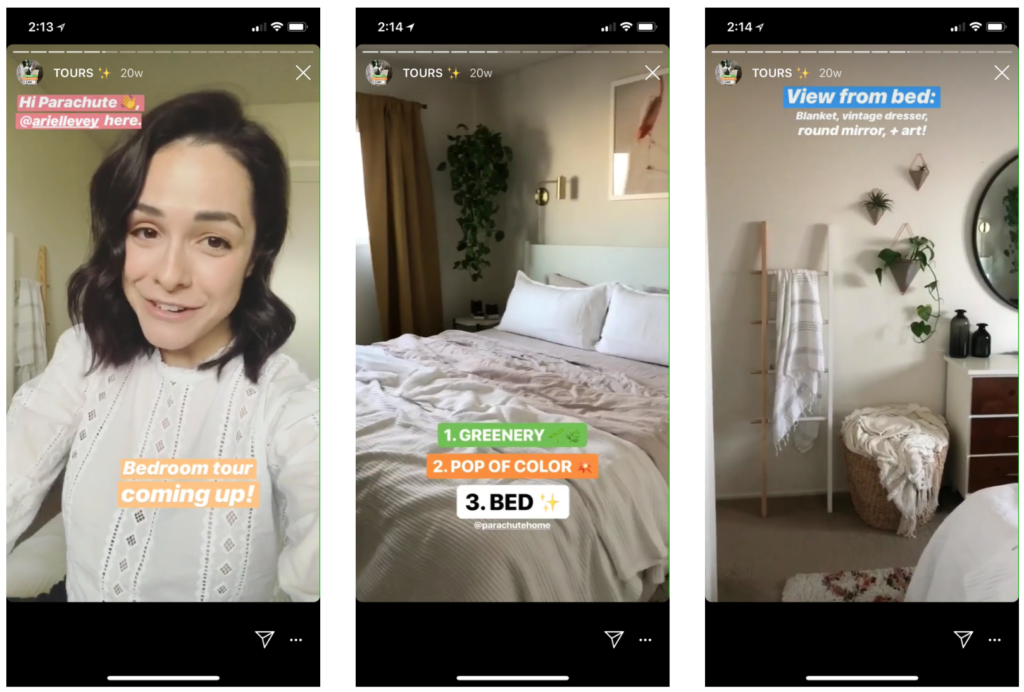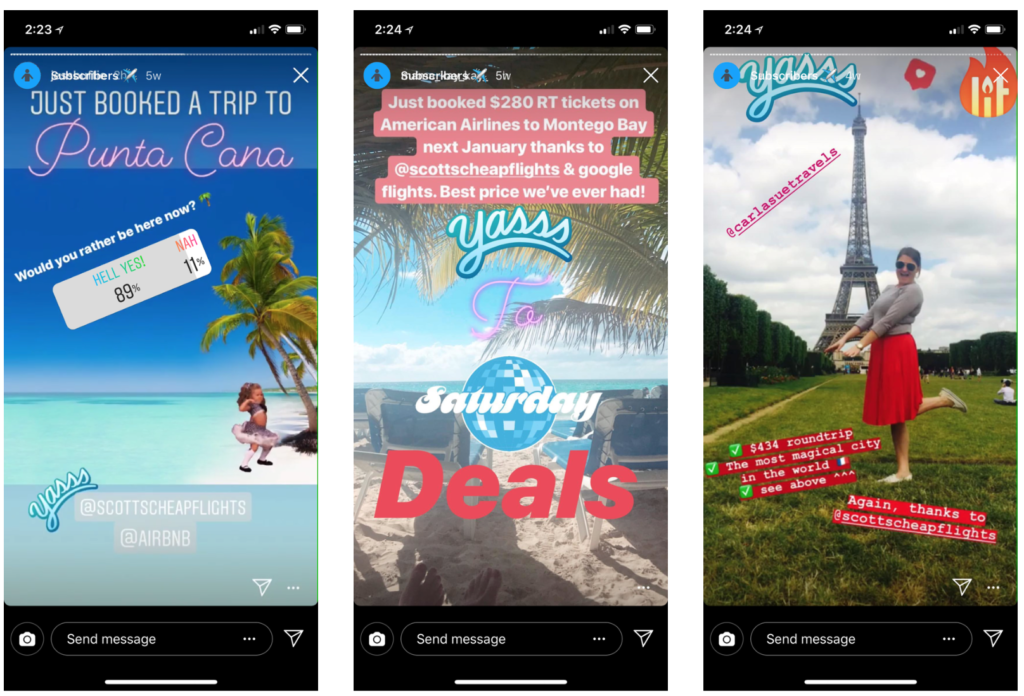Instagram Stories might be the most captivating feature in the history of social media. Since the introduction of Stories, in 2016, Instagram engagement by its billion users has ballooned to an average of 30 minutes per day.
“Those under the age of 25 spend more than 32 minutes a day on Instagram, on average, while those age 25 and older spend more than 24 minutes a day,” Instagram wrote in an anniversary press release.
People spend so much time on Instagram that developers are working on a feature that will allow users to track their usage in order to help them be more mindful.
If you feel a little guilty about your personal Instagram habit, don’t. There are scientific reasons we keep watching. Stories videos are incredibly powerful tools for recreating the feelings we associate with positive social interaction. In order for marketers to use Stories effectively, it helps to understand what those factors are and how to create a positive user experience from them.
Sharing Stories is physically rewarding
It’s fun watching your most creative friends, influencers, and brands update their Stories, but it may be even more fun to create Instagram Stories yourself.
According to one Harvard University study, 30–40% of human conversation is devoted to disclosing information about oneself. The study found that the act of sharing thoughts and feelings with someone else actually triggers the brain centers associated with reward.

Another study points out that the act of documenting events sharpens our perceptions and memories of those experiences.
Participants in one experiment from the study visited an archaeology museum and were randomly instructed to take photos or refrain from doing so. All the while, eye-tracking glasses tracked their focus and attention. The results showed that participants who took photos spent more time paying attention to the artifacts on display. What’s more, those who took photos were less likely to report negative feelings about the experience.
The takeaway you can apply to your own marketing is that Instagram engagement goes both ways: It feels amazing to share Stories with your audience, and, likewise, you can make your audience feel amazing by paying attention to their content.
Faces focus our attention
Stories that grab viewer attention right away often feature people’s faces, which our brains are trained to recognize and remember.
A study led by researchers from CalTech found that individual neurons in our brains store information about recognizable faces. In one subject, a neuron lit up in response to photos of Halle Berry, whereas other subjects responded to images of Jennifer Aniston, characters from The Simpsons, and members of The Beatles. Photos of other objects, people’s bodies, or group photos were harder to decipher.

The results indicate that our brains understand faces in a unique way, and other research backs this up. In fact, whole areas of the brain might be devoted to finding and identifying faces in the world around us.
Influencers, who’ve often keyed into Instagram engagement better than other marketers, may seem obsessed with selfie videos, but flashing their faces may be good for business. Every time they turn the camera on themselves, influencers may just be responding to engagement data.
The vertical format works well for filming faces. With Stories, you can record facial closeups without holding your phone at an awkward angle. So while your product is cool, your team lunch looks delicious, and your airplane window is nice, if you want to captivate audiences instantly, prioritize faces in your Stories videos.
Real-time events build suspense
In a 2018 Stratechery article, Ben Thompson observed that when it comes to Stories, timing is everything. He wrote:
Part of what makes Stories such fantastic drivers of engagement is the combination of their disappearing nature — better check frequently to not miss anything! — combined with the simple mechanic of viewing them: tap tap tap.
Stories make it easy to get quick updates from a number of people and subjects. The fact that Stories are narratives unfolding in real time makes them as captivating as a good thriller, if not more so. You can’t wait to see what happens next.
Strava keeps viewers on their toes with race footage in their Instagram Stories:

A study by Lund University, in Sweden, focused on real-time social media pointed to the fact that media viewed in the present moment positively impacts consumption (consumption defined as the act of passive viewing). Interestingly, real-time media did not have the same effect on interaction and creation.
For viewers, there’s an embarrassment of Stories riches, and that can be tricky for marketers. There are always more updates to watch, and it’s so easy to just tap away from your brand’s content without interacting with it.
The lesson with real-time is to not sweat it if conversions don’t directly correlate with Stories views right away. Meaningful Instagram engagement often comes from multiple touch points and not every valuable customer will see your Stories every day. But if you consistently create compelling narratives through Stories, you can help people get to know your brand over time and find new potential customers every day.
Voyeurism gives us a social advantage
If Stories makes you feel like you’re snooping on the lives of others, well, you are. But you can blame your DNA. The live, first-person narratives of Stories give us an up-close look at people we know and don’t know, fulfilling our biological hunger for voyeurism and gossip.
Sapiens author Yuval Noah Harari discusses the evolutionary theory of gossip in an early chapter of his book:
Social cooperation is our key for survival and reproduction. It is not enough for individual men and women to know the whereabouts of lions and bisons. It’s much more important for them to know who in their band hates whom, who is sleeping with whom, who is honest and who is a cheat.
Just as we crave fatty, calorie-rich foods as if we were still in hunter-gatherer bands, we crave gossip as a survival tactic. Gossip gives us vital information about the world around us. And our brains reward us when we unlock that info from Instagram.
Bedding and linen store Parachute feeds our need for voyeurism by giving us a look inside the homes of others:

The pleasure from voyeurism may be inextricable from our need to share.
A study at the University of Turku, in Finland, focused on how social media use gives us gratification from both voyeurism and exhibitionism. The key observation was that on social media platforms, one gratification could not exist without the other. The researchers described it as “a two-sided market.” We wouldn’t reap the same neural rewards if we could only view content and not post it, or vice versa.
This is a valuable lesson about what you’re offering to your audience in your Stories transaction. If you want to reward their voyeuristic senses, then make your Stories about access to people, places, and experiences that viewers might otherwise not have.
Live public events create shared experiences
Stories videos are public, as well as ephemeral; those who watch the same Stories feel more connected because of the shared experience.
As Snapchat discovered when they pioneered the format, real-time enhances the connective power of Stories. “People who watch the stories all watch it in the same time frame, and that creates a conversation around content,” Ben Schwerin, Snapchat’s director of partnerships for Stories (now VP of Partnerships), told Time magazine.
In the same article, Scott Campbell, a professor at the University of Michigan, whose research focuses on mobile communication behavior, said that it creates an in-group of people who believe that “we’re all part of something that’s really cool.” Anyone who follows an account can join the group.
Travel site Scott’s Cheap Flights (no relation to Prof. Campbell) features Stories from its community members who love to share their adventures:

But Nir Eyal, a professor at Stanford University and the author of Hooked: How to Build Habit-Forming Products, hints that the desire for connection on social media comes from darker psychological sources.
In an interview about the compulsive behaviors around Stories, Eyal said:
I think it comes down to these internal triggers of emotions. So I think what we’re doing is we’re looking for some kind of relief from some kind of discomfort. So are we feeling lonely? Are we feeling bored? Are we stressed? What are we escaping from?
According to Eyal’s analysis, Stories gives us relief from loneliness and other negative emotions, but it doesn’t last. It’s important to consider negative impacts as you move forward with your Stories strategy. Think about how you can be a positive influence, and focus on quality interactions to benefit you and your audience. When people message you about your Stories, send back a timely personal response. When you have an active community of followers, invite them to participate in online and off-line events, giving them opportunities to connect in meaningful ways.
Using psychology for good
Instagram Stories may be so successful because Stories create the best replication of a social experience. Stories make our brains light up with the recognition of knowing another person. But since we’re engaging in ways that we’re still learning about, marketers should take special care of their audiences. While negative emotions are powerful, nobody wants to feel miserable for 30 minutes a day. So take these scientific notes out into the field with caution — and go create positive Stories that make your viewers feel connected and fulfilled.



1 comments On 5 Scientific Reasons Why Instagram Stories Are So Engaging
Pingback: 5 Scientific Reasons Why Instagram Stories Are So Engaging – Just Internet Marketing ()
Comments are closed.